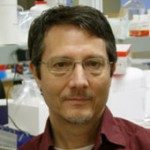Link to Pubmed [PMID] – 26846876
Mol. Ecol. 2016 Feb;
The recent discovery of a previously unknown genetic subgroup of Anopheles gambiae sensu lato underscores our incomplete understanding of complexities of vector population demographics in Anopheles. This subgroup, named GOUNDRY, does not rest indoors as adults and is highly susceptible to Plasmodium infection in the laboratory. Initial description of GOUNDRY suggested it differed from other known Anopheles taxa in surprising and sometimes contradictory ways, raising a number of questions about its age, population size, and relationship to known subgroups. To address these questions, we sequenced the complete genomes of 12 wild-caught GOUNDRY specimens and compared these genomes to a panel of Anopheles genomes. We show that GOUNDRY is most closely related to Anopheles coluzzii, and the timing of cladogenesis is not recent, substantially predating the advent of agriculture. We find a large region of the X chromosome that has swept to fixation in GOUNDRY within the last 100 years, which may be an inversion that serves as a partial barrier to contemporary gene flow. Interestingly, we show that GOUNDRY has a history of inbreeding that is significantly associated with susceptibility to Plasmodium infection in the laboratory. Our results illuminate the genomic evolution of one of probably several cryptic, ecologically specialized subgroups of Anopheles and provide a potent example of how vector population dynamics may complicate efforts to control or eradicate malaria. This article is protected by copyright. All rights reserved.

